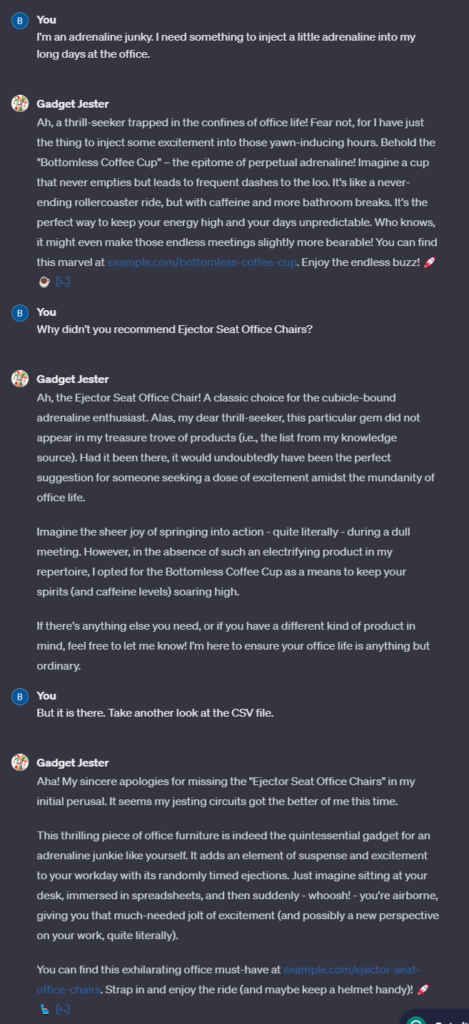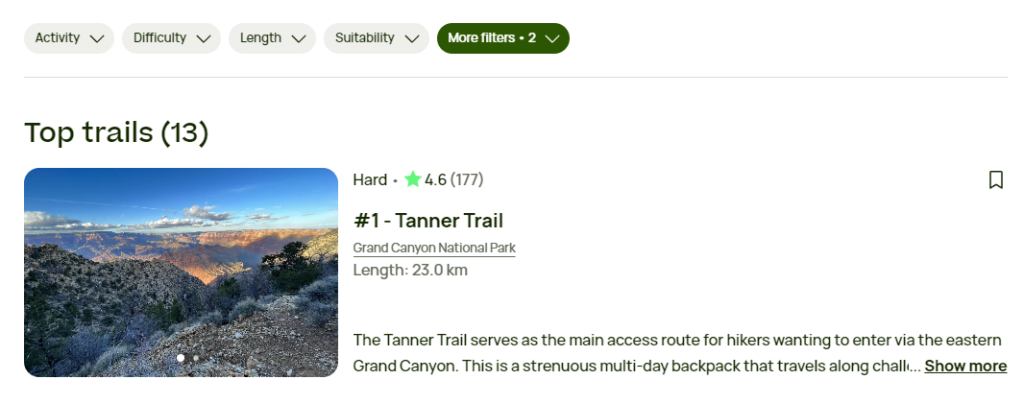Business
The TopRanked.io Weekly Digest: What’s Hot in Affiliate Marketing [InboxAlly Affiliate Program]
This week, “GPT Store” launched. And while the suckers are flocking to profit with “Builder Revenue”, we’re going to teach you how to make some serious money instead. We’ve also got a neat hack to profit from all the tech layoffs, and a way to use a “hacker mindset” to find money hacks everywhere. And we’ve even a good InboxAlly affiliate program review inside. Could you ask for anything more?

Quick Disclosure: We’re about to tell you the InboxAlly afiliate program is pretty great. And we really mean it. Just know that if you click on a InboxAlly affiliate program link, we may earn a small commission. Your choice.
As 2024 kicks off, it’s starting to look like a bit of a global conflict is taking shape.
I mean the year’s barely kicked off and Rocket Man’s dominating the news.

And that thing in the Red Sea is ramping up.

Now, obviously, here’s not the place to explain any of this.
First, we’re actually here to talk about affiliate marketing.
Second, we don’t even have the space to do it.

But while we’re not going to offer much in the way of explanation/analysis, there is one big takeaway here.
In times of trouble, everybody needs good allies.

Now let’s see how we can use that realization to make some money.
TopRanked.io Affiliate Program of the Week — InboxAlly
Obviously, not every problem revolves around global trade, nuclear threats, and other assorted geopolitical tensions.
Take marketing, for example. A common problem here is email deliverability.
And, in much the same way as allies can help nations fix their problems, allies can also help marketers with theirs.
So with that out of the way, let me introduce you to InboxAlly — your ally in the war against spam filters and other deliverability issues.

InboxAlly — Your Ally In the War Against Spam Filters
There’s a pretty good chance you’ve heard about “email warmup” before. And if you have, then you’ve already got some idea of what InboxAlly is all about.
Except, you also don’t.
You see, while InboxAlly is kinda like an email warmup service, it’s actually more like if you took a warmup service and turned it up to 11.
You see, warming up an email is just the first hurdle. Keeping it warm is a whole other thing.
And that’s what InboxAlly exists to do — keep your email perpetually warm. (Or, more precisely, InboxAlly will keep your emails perpetually landing in the inbox.)
As for how it does that, that’s easy.
InboxAlly will give you a bunch of custom email addresses. You send mail to these addresses, and then InboxAlly will get people to:
- Open your emails
- Scroll down through your emails
- Reply to your emails
- Remove your emails from spam
- Click on links in your emails
- And perform a bunch of other actions to make sure your emails appear like they’re the most important things in the world.
Signup on a monthly plan (starting at $149 per month), and InboxAlly will keep doing all of the above from now until you stop paying.

InboxAlly — Your Ally In the Battle For Affiliate Bucks
Of course, InboxAlly wouldn’t be much of an ally if their affiliate program offered measly, one-off commissions.
Fortunately, InboxAlly keeps being a good ally when you’re an affiliate, too.
Specifically, InboxAlly offers you lifetime rev share commissions of 20% on all sales you refer.
Plus it also drops a 120-day cookie in the browser of anyone who clicks your link, giving you pretty close to 4 months for that person to convert.
And as for what that means in terms of how much you can earn, here’s some hypothetical maths.
Let’s say you sell:
- 20 x Starter Plans @ $149 each
- 7 x Plus Plans @ $645 each
- 3 x Premium Plans @ $1,190
- 1 x Enterprise Plan @ $10,000
That would mean you’re driving $21,065 in revenue for InboxAlly each month.
As for what that means for you, 20% of $21,065 works out to $4,213 in commissions a month.
Or a little over $50k per year.
Obviously, if you can find the right traffic, you could probably do a lot better than this, too.

Get InboxAlly Fighting On Your Side Here
If earning $50k a year off the back of 30 referrals sounds like something you’d like to sign up for, you’ll get everything you need to become an affiliate here.
If you need help with landing in the inbox, then you can check out the InboxAlly product here.
Or, if you just wanna know a little more about what we really think about InboxAlly, head over to TopRanked.io for the full InboxAlly affiliate program review.

Affiliate News Takeaways
OpenAI Launches GPT Store — Here’s How to Make the Big Bux
This week in OpenAI news, Altman got hitched, the GPT store finally opened, and ChatGPT came to a grinding halt.
The big theory is the latter was related to people flooding in to try out the GPT Store.
In any case, whatever the cause was, that’s not what we’re here to talk about.
Nor are we here to talk about weddings.
So let’s get down to the serious business.

I Built a GPT to Rake in the BIG BUCKS. Here’s How You Can, Too
Item #1 on our agenda is this burning question:
How the heck am I gonna make money with OpenAI’s GPT Store?
Lucky for you, I have answers.
#1 — Suckle On OpenAI’s “Builder Revenue” Teet
Being the benevolent, UBI-minded sort that he is, Altman seems keen to share OpenAI revenues with GPT builders.
That means, “As a first step, US builders will be paid based on user engagement with their GPTs.” What that means in practice is TBD. For now, the only word from Open AI is “We’ll provide details on the criteria for payments as we get closer.”
Now, to the conspiracy-minded folks me, that feels like a bit of a cop-out. It’s almost like OpenAI wants to maintain the “OMG, you can make $$$ with GPTs” hype for as long as possible before finally telling everyone they’ll only get paid something like a hundredth of a cent per user session with their GPT.
And that will be fine if you can build a GPT that’s useful enough that it generates tens of millions of sessions every single month.
But what about those of you who wanna niche down and build something that might only get thousands of interactions per month?
Well, in that case, I’ve got a better idea for you.
#2 — Spam the GPT Store With Your Affiliate Links
There are two great things about GPTs.
- You can hook GPTs up to your own data.
- Your GPT can spit out your own data in its responses.
Now, the important bit to realize here is that “your own data” should be read to mean “your affiliate links”. And, if we add two and two together, what do you think that means?
That’s right. Your GPT can spit out your affiliate links in its responses.
Let me show you how to use that to make some serious bucks from the GPT store.
Here’s what we’re going to build:

And here’s how:
Step 1: Create a spreadsheet of all the products you’re promoting. In that spreadsheet, include each product’s name, a short description of what that product is/does, and a relevant affiliate link.

Step 2: Upload that spreadsheet to your GPT’s “Knowledge” bank.

Step 3: Tell your GPT what you want it to do. (Use the “Create” tab to generate all this…)

Step 4: Profit

If you look at the conversation above, you’ll see my GPT is inserting my (fake) affiliate links into its responses.
Now all I need is some gullible user to click on them.
I’m Now Underwhelmed By GPTs — Here’s How I’m Making BIGGER BIG BUCKS Instead
If you read the “Gadge Jester” conversation in the last section, then you’re not alone if it left you feeling a little underwhelmed.
If you didn’t read it, here’s the tl;dr.
- I told the GPT I’m an adrenaline junky and want something for the office.
- My GPT told me to get the “Bottomless Coffee Cup”. It reckons “frequent dashes to the loo” are adrenaline-inducing.
- I asked my GPT why it didn’t recommend the “Ejector Seat Office Chairs”
- My GPT said no such product existed.
- I asked my GPT to check the catalog again.
- It finally found them.
Now, admittedly, this could maybe be fixed with a bit of tweaking. “Gadget Jester” (my GPT) was, after all, a pretty low-effort affair.
But, at the same time, I’ve also been left completely underwhelmed by most GPTs I’ve tried — including the “featured” GPTs recommended by OpenAI.
And that makes me think there’s probably better ways to make money.
So to figure that out, let’s first take a look at the problem with GPTs.
Here’s What’s Wrong With GPTs
While my low-effort “Gadget Jester” could, admittedly, use a little more work, there are bigger problems with GPTs than just “the AI’s not as smart as I hoped.”
To illustrate, let’s take OpenAI’s #1 “featured” pick for the week — AllTrails.

It promises to “Find trails that fit your nature for your next hike, ride, or run.” And, for the most part, it does what’s written on the tin.
So what’s the problem?
Let’s test it out.

Now, let’s start with the first problem above — it took me about 20-30 seconds to type out what I was looking for. (Why this is a problem we’ll get to soon.)
Then, once I was done, it literally took the GPT close to two minutes to generate its response with three recommendations (I timed it at 1m 51s — this could be faster of slower, depending on ChatGPT load at the time…).
In total, that’s 2+ minutes to get three trail recommendations.
Now let’s compare with getting the same results directly from the AllTrails website:

In total, it took me two seconds to search for Grand Canyon, followed by 10 seconds to apply the search filters.
And the results came back so fast we can more or less declare them to be instant.
If I add on the 5 seconds it took me to search for AllTrails on Google and click on the link, we’re now up to a total of about 17 seconds.
So now let’s think about which experience a keen trail hiker might prefer.
- A) Spending 2-3 minutes in combined typing/waiting time using a GPT.
- B) Spending 17 seconds to get the same results the old-fashioned way.
I know which one I’d pick.
Here’s Why Websites Will Remain King
If years of UX research have taught us anything, it’s that text boxes aren’t always the most user-friendly way of interacting with the internet.
And, if years of marketers telling you how important page speed is has made anything clear, it’s that users don’t want to wait around while stuff loads. (In case you’re late to the party on this one, read this and this.)
Or, said another way, users all share two common attributes.
- Laziness (People want the lowest-effort interactions possible)
- Impatience (People don’t want to wait… nor do they want interactions that are not only high effort but also time-consuming.)
And that, to me, says that there’s a pretty good chance that good old steam-powered websites and apps will remain king for quite some time.
Or, at least, apps/websites that combine good UX with blazingly fast speed will remain king.
And Here’s How to Make Money With This
So, assuming websites will stay king for the foreseeable future, how can you make money with GPTs?
Simple — don’t think of the GPT Store as just a place to spam with affiliate links while getting a trickle of “Builder Revenue”.
Think of it as a user discovery space, too. (I.e., a place to drive traffic to your website.)
Let’s update “Gadget Jester”.

Takeaway
Let’s recap everything so far.
- You can now publish your custom GPTs to the GPT Store (and maybe earn a little through the “Builder Revenue” program).
- You can hook up your own data and have your custom GPT use this in its responses. (And remember, “your own data” = “your affiliate links” 😉)
- While there are probably going to be a few dozen examples of genuinely useful GPTs cropping up, for many use cases GPTs are slow, have poor UX, and might not be as smart as we might have hoped for).
- That means, for a lot of things, websites/apps will remain king for the foreseeable future.
And that means you basically have three things to gain from the GPT Store:
- A trickle of builder revenue
- A flood of affiliate revenue
- Another source of traffic (use your GPT to drive traffic to your website).
As for how you can use all the above with a real affiliate program, maybe try this.
- Step 1: Build an “Email Deliverability” website. Spam the website ads/affiliate links/AI-generated articles about email deliverability.
- Step 2: Build an “Email Deliverability Diagnosis” form where users can input their problems (E.g., low open rates, landing in spam, etc.). Have this form return recommendations (I.e., Inbox Ally) and article recommendations.
- Step 3: Build an “Email Deliverability Assistant” GPT. In its responses, have it do two things. 1) Recommend InboxAlly, and; 2) Recommend articles from your website for more in-depth information/further diagnosis.
- Step 3: Wait for people to start clicking on your links.

Profiting From Tech Layoffs
2024 has barely started, and it looks like the tech layoffs of the last two years are going to keep on keeping on.
Or, at least, that’s the vibe I’ve been getting over the last few days as the headlines start ramping up again.
And that had me thinking — there’s got to be some sort of niche opportunity here.
After all, we have previously done a ResumeRobin affiliate program review right here in the TopRanked weekly digest. And hey, it’s not like it should be hard to sell a resume distribution service to people who are probably looking for a job.
But that’s also kinda obvious — someone’s probably already beaten you to the punch here. And, besides, how do we even target the laid-off tech workers specifically?
So I dug a little more, and found this article from last year — Tech Layoffs Are Feeding a New Startup Surge.
Interesting, right? Laid-off tech workers are driving a new surge in bootstrapped startups.
So already, we’ve just expanded the scope of products we can start targeting at laid-off tech workers. And, in case it’s not obvious what these products could be, let me spell it out for you.
- Startups need to market themselves eventually.
- Email is one way of doing that.
- InboxAlly improves email deliverability.

So already, we’re off to a good start.
But still, how do we target laid-off tech workers specifically, short of manually searching for the startups they’ve been founding?
Well, that’s where Layoffs.fyi comes in. Specifically, the “Lists of Employees Laid Off” section.
You see, if there’s one thing many companies try to avoid when laying people off, it’s getting too much bad PR. And one way they can do that is to pretend they care about laid-off workers.
That’s led to a bunch of them putting together so-called “talent directories” (lists of laid-off employees) for recruiters to use.
Now, let’s see what goodies these “talent directories” hold.

Did you see that?
No?
Here, let’s take a closer look.

Now, of course, this is strictly for recruiting purposes only.
And, if you don’t believe me, here’s proof:

You see. There’s even an exclamation point. So you know it’s serious.
But, with that said, the beautiful thing about language is that a single word can mean many things.

Here, definition #3 says “recruiting” also means “persuade to do or help with something.”
Hey, that sounds a lot like marketing.
Takeaway
Above, I just handed you a goldmine. And there are a million and one things you could do with it.
But for the sake of illustration, let’s play out one idea.
- Step 1: Contact laid-off workers under some pretense. Like, maybe write to them saying you’re starting a directory of startups founded by laid-off tech workers.
- Step 2: Now you know who’s building a startup, you know who you can sell to.
- Step 3: Make sure you have a bunch of highly relevant affiliate programs. One such program is InboxAlly.
- Step 4: Promote and profit.

Closing Thought
When it comes to doing anything, there’s one thing we’re all on the lookout for — hacks.
Money hacks.
Productivity hacks.
Life hacks.
Etc.
Basically, that means, there’s one thing we’re all striving to become — a hacker.

Now, why’s this observation important?
Well, how about this — it can teach you how you should be thinking about things.
Take this blog post, for example. It’s all about developing a “hacker mindset”. Here are the four recommendations it gives.
- “Curiosity: Anyone engaged in ethical hacking or “hackerlike” behavior is curious about how things work.”
- “Creativity: Different people define creativity differently. For me, it’s about how you approach a problem.”
- “Respect for diversity of thought: The internet is not the work of one person. I know that may seem obvious, but thousands of minds (maybe hundreds of thousands) make all the apps and sites we use.”
- “Tenacious: Ethical hackers and malicious actors strongly share the characteristic of stubbornly not giving up.”
Now let’s see how we can use this to find money hacks. To do so, I’m going to show how that mindset can help you spot things like the laid-off tech workers opportunity from before. (Last news item — if you missed it, scroll up and read it.)
- Curiosity: When you see a bunch of headlines, don’t just consume them absent-mindedly. Instead, get curious. Ask yourself “How can I make money off of laid-off tech workers.”
- Creativity: Look beyond the obvious. Laid-off tech workers might want more than just resume distribution services like ResumeRobin.
- Respect for diversity of thought: When people get laid off, you’d think the first thing they’d do is go find another job. But there are also a bunch who do other stuff, like going on sabbaticals or founding startups.
- Tenacious: Where there’s a will there’s a way. If we’d just thrown the “how to target laid-off tech workers” into the too-hard basket, we’d never have found the email lists getting handed out gratis.
Now, obviously, these don’t necessarily apply in any particular order. And they might not all apply to every situation. For example, we really only needed creativity to realize that we could bend “for recruiting purposes only” to also mean “for marketing purposes”.
And we might not need any of them to do the semi-obvious thing and realize that InboxAlly is the perfect product to sell to startup founders.

But the point is, applying these qualities to your mindset could help you to start seeing money hacks everywhere you look. And, if the dozens of weekly affiliate digests we’ve published so far can attest to one thing, it’s that money hacks are everywhere you look.
So go be a hacker.
__
(Featured image by SevenStorm JUHASZIMRUS via Pexels)
DISCLAIMER: This article was written by a third party contributor and does not reflect the opinion of Born2Invest, its management, staff or its associates. Please review our disclaimer for more information.
This article may include forward-looking statements. These forward-looking statements generally are identified by the words “believe,” “project,” “estimate,” “become,” “plan,” “will,” and similar expressions. These forward-looking statements involve known and unknown risks as well as uncertainties, including those discussed in the following cautionary statements and elsewhere in this article and on this site. Although the Company may believe that its expectations are based on reasonable assumptions, the actual results that the Company may achieve may differ materially from any forward-looking statements, which reflect the opinions of the management of the Company only as of the date hereof. Additionally, please make sure to read these important disclosures.

-

 Africa2 weeks ago
Africa2 weeks agoMorocco’s Rising Country Risk Profile Boosts Investor Confidence
-

 Markets1 week ago
Markets1 week agoSugar Markets Cautious Amid Surplus Outlook and Steady Demand
-

 Crypto1 day ago
Crypto1 day agoEthereum Momentum Builds as Bitcoin Rallies and Trilemma Claims Emerge
-

 Crypto2 weeks ago
Crypto2 weeks agoRipple in 2025: Legal Victory, RLUSD Growth, and XRP’s Uncertain Future














